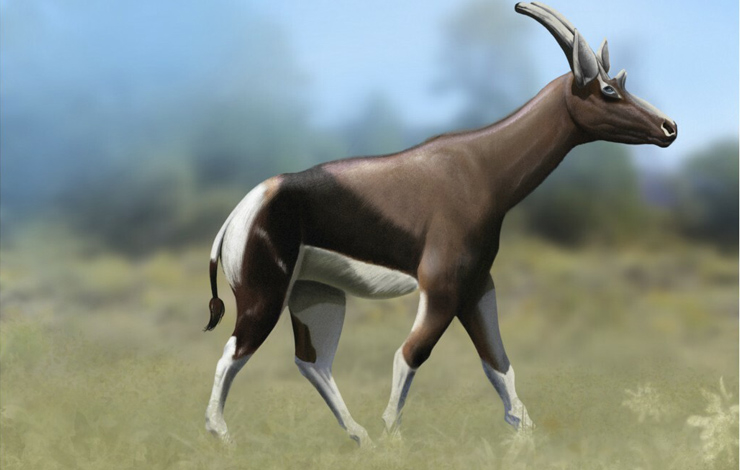15-11-2021

María Ríos, researcher at GeoBioTec in the Department of Earth Sciences at the NOVA School of Science and Technology, is part of the team that discovered the first evidence of the presence of the extinct giant giraffe Sivatherium in Western Europe.
The study of fossils, 5 million years old, discovered during paleontological interventions resulting from the construction of MU-31 in Puerto de la Cadena (Venta de la Paloma, Murcia), concluded that they represent at least two individuals, one of them a young man from Sivatherium cf. hendeyi.
“The giraffe from Puerto de la Cadena represents the first evidence of Sivatherium in Western Europe and possibly the first evidence of Sivatherium hendeyi outside the African continent,” says co-author Dr. María Ríos.
These new discoveries, along with the presence of other African taxa in the same location, indicate a connection between African and European fauna during the early Pliocene and extend westward the geographic extent of these extinct giants, while providing important clues about their evolution.
The family of the giraffes today only has two living representatives: the African Giraffe, which is the tallest mammal on Earth reaching 6.1 meters in
height; and the smaller and elusive Okapi, who only inhabits the dense forests of the Congo DR and has a much shorter neck. However, in a not so distant past (around 10 million years ago) the giraffe family was widespread throughout all Africa and Eurasia. It was a very diverse family with more than 50 different species that ranged from small to very large and sported all kind of different ossicones (the ossicones are the special type of horns the giraffes have). It was during that time that the lineage of the sivatherines originated in Africa, rapidly expanding through all Eurasia. The later representatives of this clade survived in Africa into the Pleistocene probably coexisting with humans before becoming completely extinct. The sivathere clade showed a trend towards gigantism in a different way than the giraffe, as instead of elongating the neck or limbs, sivatheres increased their overall body mass and size while being supported by relatively short and robust limbs. They also had extremely large and
complicated ossicones.
The sivatherine clade, named after the Hindu deity Shiva, god of destruction was recovered for the first time in India during the 19 th century and includes some of the largest giraffes that have ever existed. The first representative of the Sivatherium genus, Sivatherium hendeyi, is first found in the early Pliocene of Langebaanweg in Cape Town, South Africa around 5 million years ago.
In addition to the NOVA Department of Earth Sciences, the University of Valencia, the National Museum of Natural Sciences-CSIC and the Dirección General de Bienes Culturales de la CARM participated in the study.
Read the full article here.